As the world began to embrace technology, Hollywood movies naturally moved to reflect what was and could be. With the film industry centered in the make-believe world, filmmakers began incorporating techs into movie plots. The action and science fiction genre heavily benefited from this, with many of their films featuring future techs that weren’t prevalent at the time.
While it may seem extreme to liken these filmmakers/screenwriters to Nostradamus, there’s no denying many of their predictions have come to pass. Although we may still be a few decades away from a world where flying cars are a norm, it doesn’t take away the possibility as depicted in films as far back as Chitty Chitty Bang Bang (1968), Blade Runner (1982), Back to the Future (1985), and The Fifth Element (1997). Here are 7 future techs predicted by movies.
2001: A Space Odyssey (1968)
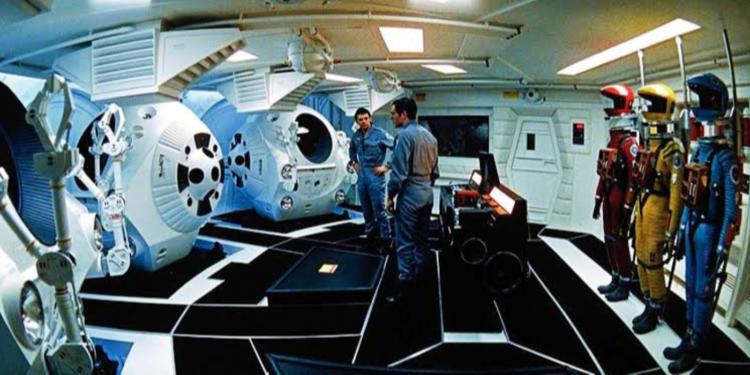
Stanley Kubrick‘s epic science fiction film 2001: A Space Odyssey (1968) remains one of Hollywood’s best movies in the genre. The film became a pioneer of special effects in filmmaking. Although it featured several other future techs like HAL, a HAL 9000 computer, which was referred to as having a human-like personality (Artificial Intelligence in today’s world), 2001: A Space Odyssey predicted space travel and exploration. Released theatrically in the United States on April 3, 1968, 2001: A Space Odyssey showcased elements of space travel and Earth’s view from the moon. It is interesting to note that 2001: A Space Odyssey was released a year before the Apollo 11 lunar module landed on the moon with astronauts Neil Armstrong and Edwin “Buzz” Aldrin.
Star Trek
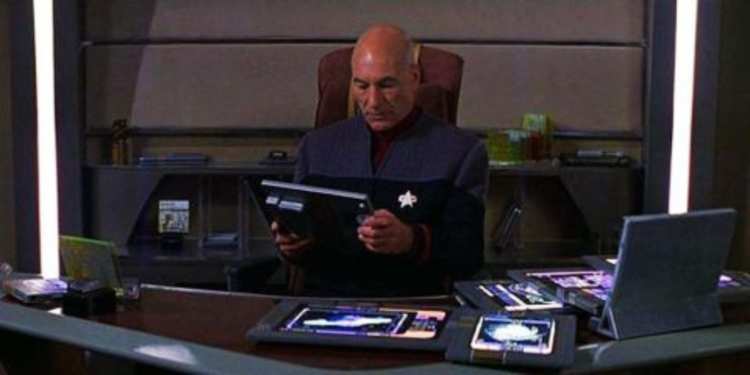

The Star Trek franchise is one of Hollywood’s biggest and most successful franchises. Since its first television series, Star Trek: The Original Series, in 1966, the franchise has birthed several other series and films. Star Trek has predicted future techs in more ways than one. Rather than highlight them individually, these are some notable mentions of future techs used in older Star Trek series and films that are available now. The Personal Access Display Device (PADD) in Star Trek may have been an advanced tech at the time, but it is what is known as computer tablets today.
Kirk used handheld translators to help translate languages in Star Trek. While we may not walk around aliens like in Star Trek, Google Translate is a closer tech to the franchise’s handheld translators. Star Trek also predicted the use of telepresence and flip phones. While it’s easy to appreciate Skype and Zoom today, in the 60s, Star Trek‘s telepresence tech was far too futuristic for its audience. The series and films also featured Bluetooth-like earbuds, automatic doors, and voice-activated AI (cues in Siri and Alexa).
Star Wars Films
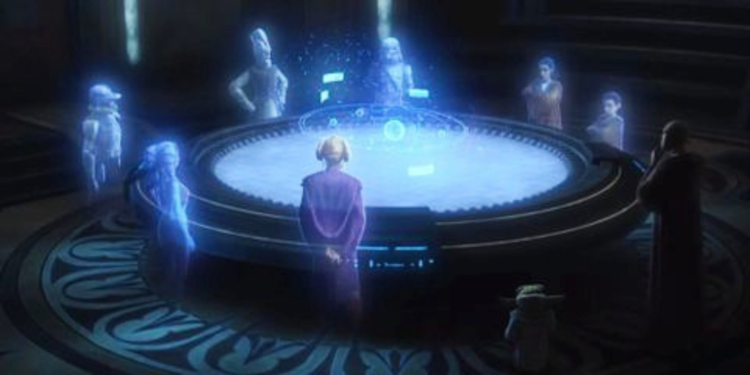

Film and television audiences were first introduced to George Lucas‘ world of Star Wars in 1977 with the release of the first installment of the original trilogy. Although Lightsaber technology has yet to become a militarized weapon, Star Wars has its fair share of predicting future techs. Also, as depicted in Star Wars, the Force Fields may not yet be mainstream, but much research is being done to replicate the technology. Boba Fett’s jet pack tech was far too futuristic when it first appeared on screen. Today, the jetpack technology isn’t a future tech anymore. One of Star Wars‘s top futuristic tech had to be the hologram. At the time, humans were still perfecting telephone technology, making holography an uncertain future tech prediction.
James Bond Films
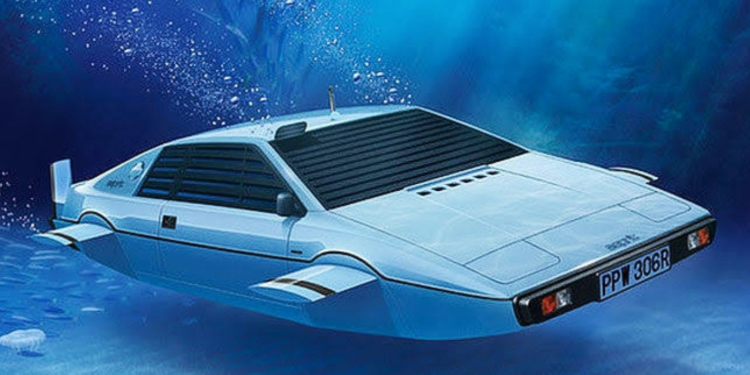

Away from epic space/science fiction, the James Bond movie series had a more relatable use of predicted future tech and gadgets. Since James Bond was human (albeit a trained spy), incorporating these future techs made the movies more realistic. However, to audiences at the time, these gadgets were future techs that probably wouldn’t exist for almost a century. However, less than a century after the first on-screen adaptation of Ian Fleming‘s novels, many of those future techs have become realities.
James Bond’s messaging watch, as seen in The Spy Who Loved Me (1977), is closely related to today’s Apple watch. The movie also showcased the agent’s convertible submarine, which, although it isn’t yet mass-produced, is an available tech today. James Bond spy cameras, a future tech at the time, are now available in micro and nano sizes. In the Pierce Brosnan-led James Bond film Tomorrow Never Dies (1997), Bond used a mobile phone controller to remote-control his BMW. In 1997, this was a tech, although being explored at the time, was also considered futuristic.
The Terminator Films


At the heart of The Terminator films are futuristic techs, especially in the mid-80s. The first film in the franchise was released in 1984. If audiences are to ignore humanity’s archnemesis, Skynet, the company used several futuristic techs. The movies incorporated and showcased robotics, automation, and generative AI. Also, besides its use of augmented reality, it depicted the militarization of tech.
I, Robot (2004)
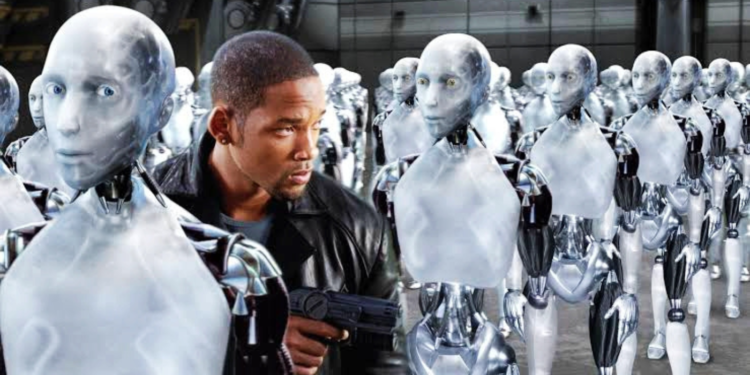

Alex Proyas‘ science fiction action film I, Robot (2004) is far from being the first movie to predict the future tech of Artificial Intelligence or robots. Still, it’s easily remembered by film audiences today. While sentient artificial intelligence has been featured in movies in the past, VIKI (Virtual Interactive Kinetic Intelligence) wasn’t only for commercial use but was also installed in Dr. Alfred Lanning’s (James Cromwell) home. I, Robot, predicted the use of robots in ways other than their militarized form in films like The Terminator. Robots were used as help, assistants, and providers. Although robots don’t walk freely amongst the human population today, they have been incorporated into virtually all our lives.
Mission: Impossible III (2006)
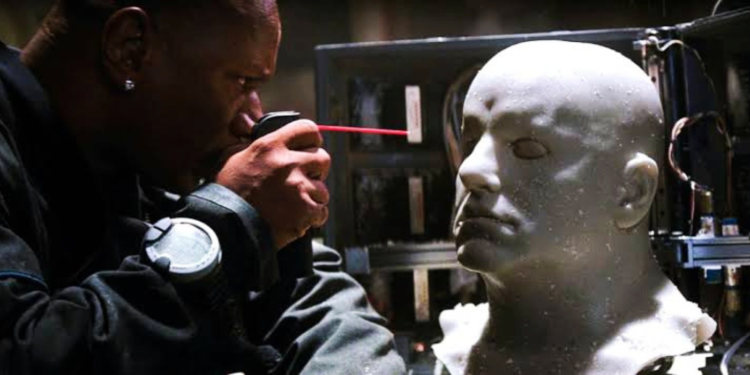

The Tom Cruise-led Mission: Impossible film series has been a success since the first installment in 1996. Besides being one of the highest-grossing action franchises in the world, Mission: Impossible has also had its fair share of tech use. More than half of Ethan Hunt’s impossible missions are only made possible with technology. However, the one that makes the list is the 3D printer Hunt used to print a masked face of the villain, Owen Davian (Philip Seymour Hoffman) from Mission Impossible III. While the technology isn’t available commercially, it has been adapted for use in the manufacturing industry. 3D printers, a futuristic tech in 2006, are now readily available for all and sundry.
